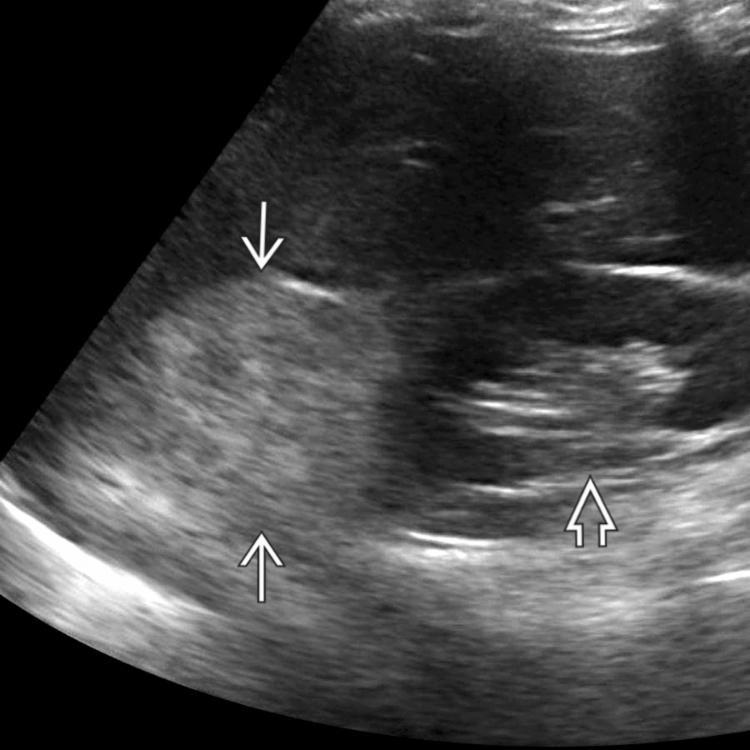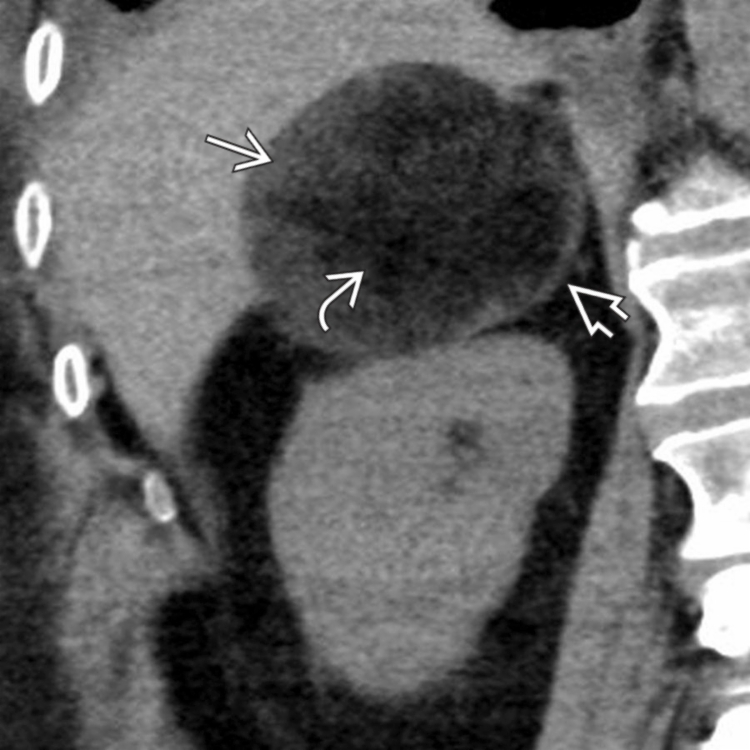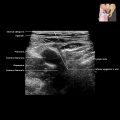KEY FACTS
Terminology
- •
Definition: Rare benign tumor consisting of macroscopic fat interspersed with hematopoietic elements
Imaging
- •
Appearance varies depending on admixture of fatty and myeloid soft tissue components
- •
Predominantly fatty: Well-defined, homogeneous, hyperechoic suprarenal mass
- ○
When small, difficult to distinguish from echogenic retroperitoneal fat
- ○
- •
When myeloid cells predominate: Heterogeneous mass, isoechoic or hypoechoic
- •
Punctate calcification in 25-30% of cases
- •
Hemorrhage more common when > 4 cm, varied appearance
- •
Color Doppler: Avascular to hypovascular
Top Differential Diagnoses
- •
Adrenal hemorrhage
- •
Pheochromocytoma
- •
Liposarcoma
- •
Renal angiomyolipoma
- •
Adrenal adenoma
- •
Adrenal metastases
Pathology
- •
Contains mature fat cells with variable mixture of myeloid cells, erythroid cells, and megakaryocytes
Clinical Issues
- •
Usually in older age group: 50-70 years; M=F
- •
Usually found incidentally
- •
Clinical signs are usually absent except in rare cases of hemorrhage and rupture producing acute abdomen
- •
Pain from necrosis, hemorrhage, or compression of structures
Diagnostic Checklist
- •
Confirm that fat-containing lesion arises from adrenal gland and not adjacent organs or retroperitoneum
- •
Adrenal mass with discrete focus of macroscopic fat is virtually diagnostic of myelolipoma
Scanning Tips
- •
Look for acoustic shadowing or propagation speed artifact from fat
 above the right kidney
above the right kidney  .
.
 containing ill-defined, “smoky” soft tissue elements
containing ill-defined, “smoky” soft tissue elements  and macroscopic fat
and macroscopic fat  .
.
 posterior to the liver. There is discontinuity of the diaphragm
posterior to the liver. There is discontinuity of the diaphragm  from propagation speed artifact.
from propagation speed artifact.
Stay updated, free articles. Join our Telegram channel

Full access? Get Clinical Tree








